Surveying the Vaults of Vaarn
Posted by palabomeno on Nov 23, 2020
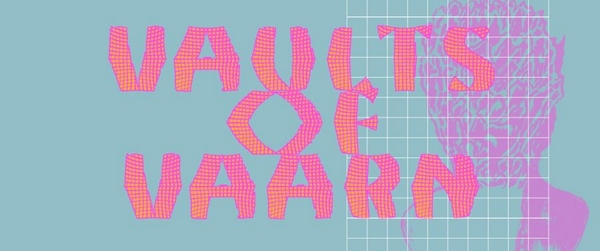
In case you aren’t keyed into the broader tabletop RPG universe, there’s something of an Old-School Revival or Renaissance (henceforth OSR) going on. Many RPG gamers are looking towards the past, to the RPG heydays of the 70s and 80s, to draw inspiration for the future of tabletop games. And what, exactly, does this imply? Well, the members of the OSR aren’t always sure themselves, but it’s typically a broader focus on player agency and dungeon crawling, increased risk of character death, and reduced focus on pre-written plots. The gamemaster of an OSR game is once again an impartial referee, whose role is to simply mediate the world that the players explore in a sandbox style. “Rulings, not rules” is a common refrain - instead of having granular rulesets that explore every possible corner-case, OSR games prefer lighter and simpler rules, giving the gamemaster the final say on what is and isn’t permissible.
But what I like about the OSR scene is the incredible bulk of content for it. There’s a lot, and I mean a lot, of really fantastic OSR blogs, zines, and books out in the world filled to the brim with imaginative and wild settings. One of these settings is Vaults of Vaarn, a pay-what-you-want zine by author Leo Hunt A.K.A. graculusdroog on itch.io.
I downloaded Vaults of Vaarn on a lark, looking for more interesting RPG content to consume, and found myself blown away. Hunt emphasizes strongly his influences, naming Dune, Hyperion, and The Book of the New Sun, as well as the art of Moebius. He says it’s fine if you’re not familiar with these works, because it’ll “make his theft seem original.” Well, I’m not familiar with any of these works (aside from the art of Moebius), and Vaarn seems pretty damn original to me. So original, in fact, I thought I’d do a little review of it, just because it’s got me so jazzed.
Welcome to the world of Vaarn
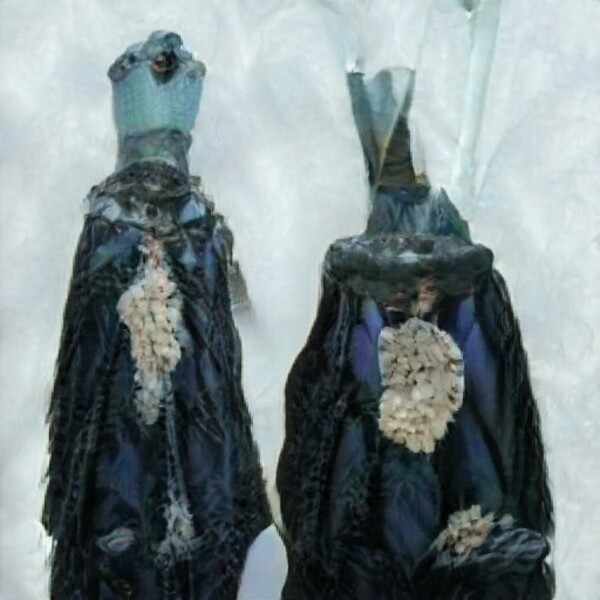
The setting of Vaults of Vaarn is Urth, a planet on the brink of extinction. The sun is red and swollen, and the world is a shattered ruin pockmarked with the rubble of once unbelievably mighty civilizations. The book actually notes two apocalypses before the time period it’s set in, one where the world was ruled by godlike artificial intelligences called the Titans, and another where Urth was controlled by a dictatorship of genetically modified tyrants called the Autarchy. But both the Autarchy and the Titans are long gone, ground into the blue sand of Vaarn.
Vaarn is the slice of Urth that you will be exploring as you play, a massive desert valley of blue sand and red sky bubbling with mystery and adventure. Vaarn is de jure under the rule of the New Hegemony, who seek to revive the old ways of the Autarchy when humanity reigned supreme, but they hold little influence outside of their established cities. The desert is studded with ancient ruins, strange creatures, and people both friend and foe to meet.
The people living in Vaarn are a strange bunch, mutants and miscreants seeking adventure and comfort in an unforgiving land. The biggest city, Gnomon, is the typical den of debauchery, cruelty, and potential success that any good setting like this requires. Outside of that city is a sprawling wasteland, infested with ruins, nomads, bandits, monsters, and more plot hooks than you could shake a stick at. The rest of Vaarn is deliberately left vague for the GM to fill in. There’s plenty to draw on inside the book - dozens of fun randomized tables are at your fingertips for cluttering up the desert with detail. But - and this is going to be a big thing going forward, so pay attention now - no two Vaarns are ever going to be the same.
The races of Vaarn
There are five core races in Vaults of Vaarn.
True-Kin
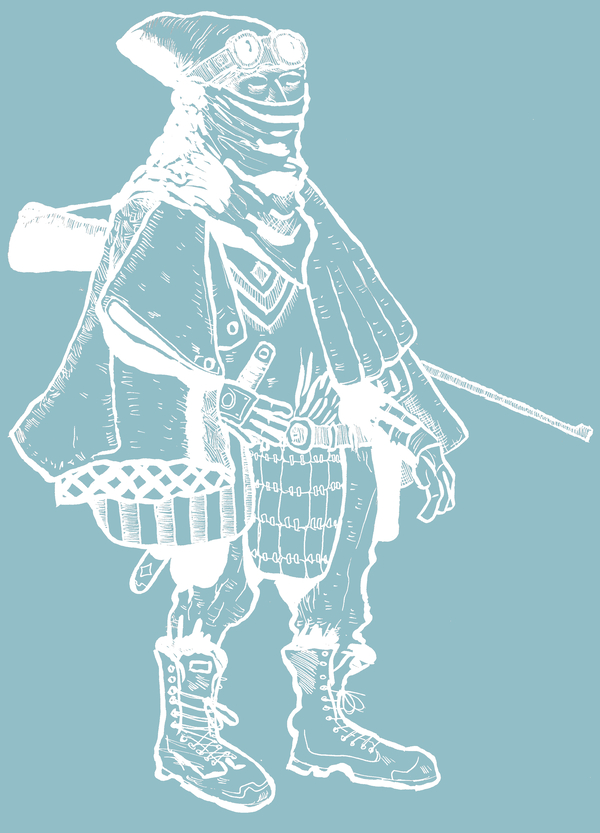
True-kin are the “default human” species, and therefore the most boring. That’s fine, every RPG needs a “baseline” for the people who want to Literally Play Themselves and roll a human fighter every time. Fortunately, the true-kin are way more interesting than the average D&D human. True-kin are unmutated human descendents of the survivors of the apocalypse that destroyed the Autarchy, untold years ago. These humans sealed themselves into arcology domes, self-sufficient bubbles that could support their own power, food, and water needs as the Urth burned outside it. These bubbles have since popped, and true-kin now wander the wastes just like everybody else.
True-kin arcologies still exist, but have either evolved into cities in their own right or degraded into new ruins littering the waste. The Hegemony was founded by true-kin, and attempts to reintroduce pre-apocalyptic culture to Vaarn, mostly in vain. True-kin get advantage (this is a special RPG term that Dungeons and Dragons fifth edition came up with that means you can roll two dice instead of one and pick the higher die) on social checks when talking to other true-kins, and have a 50/50 chance of ancient pre-apoc computer systems recognizing them as their master. Now, the social check bonus is in effect as long as you have no mutations, which is a corollary I like. As soon as you pick up a single mutation, be it from radiation, nanomachinery, or occult magicks, you’re no longer a true-kin… You’re now one of these:
Cacogen
True-kin survived the fall of the Autarchy by cloistering themselves in arcologies where they could maintain their genetic purity. The rest of us were left to fend for ourselves outside, our bodies warped by radiation, feral nanomachines, and the insane whims of AIs with a bent for genetic modification. Known as “cacogen” (from the Greek root kakós, meaning bad), the most common race of people on Vaarn resemble humanity only in passing under their mutated bodies.
Cacogen are the most common race of people on Urth, and no two are exactly alike. A cacogen could resemble a true-kin in every aspect, aside from their ability to deform their body like putty, or they could be a slug-bodied beast covered in arms and horns, dragging their shambling bulk along the sand. They’re easily the most interesting race in Vaults of Vaarn for sheer customization factor alone, as well as the narrative potential the huge d100 table of mutations provide. The mutation table has no attached mechanical effects to its mutation, and Hunt instead encourages the player to work out the specifics of their ability with the GM, allowing advantage or disadvantage to certain rolls as appropriate. I think this is a fantastic way to handle mutations, as well as a lot of potential roleplaying fun. I like any kind of mechanic where haggling with the GM over the logistics of a scene is encouraged.
Synth
As God made man in his image, so man made the Synths in their own. Synths are fully synthetic people, presumably built to serve humanity before the Great Collapse, now masterless and free to judge their own fates. Synths are not mere robots, but the word used to describe any sentient being with a fully artificial mind: from androids with synthetic brains in organic bodies, to computers on wheels, to living war-engines the size of buildings. Like cacogen, no two synths are exactly the same.
Synths, being machinery, do not require the necessities of life like eating, drinking and sleeping. They also never take damage from asphyxiation, poison, temperature or are ever at risk of fungal infection. The downside to this is that they are extremely sensitive to electrical damage, and can be hacked by errant computer viruses both deliberate and incidental. Synths seem like a staid choice for the player who wants to take little risk of character death, but the wide variety of synth body shapes leaves much room for interesting characters.
Newbeast
Humans were not the only ones changed by Vaarn. Before the great collapse, Newbeasts were genetically engineered for mysterious reasons - perhaps as talking pets, or merely for amusement. The newbeasts are now the lowest class of Vaarnish people, widely disliked by all. They live on the outskirts, scraping along in slums or turning to banditry, and those living with humans wear human-shaped masks to hide their shame.
Yes, you can be a furry in Vaarn. But it’s more than wolves and foxes: the table of random animals your newbeast could include spiders, toads, baboons, and centipedes. Like cacogen, newbeasts can get advantage or disadvantage on their rolls if it makes sense for the kind of animal they are to get it. A monkey newbeast would obviously be at advantage while climbing, for example.
Mycomorph
Urth is dying, but death isn’t always the end. Your body might become the unknowing host for a mycomorph, a sentient fungal organism that parasitizes the dead. These “twice born” remember little about their previous lives, and many of them are outright hostile and insane from half-formed memories and broken bodies. The shape of a mycomorph depends on what kind of spore infected the corpse in the first place. Men with the heads of mushrooms are common, but mycomorphs are as varied as any ordinary fungus. They may resemble a normal human whose head is covered in a fine layer of spores, or their entire body is covered by an enormous mushroom cap, the veil extending down to their knees.
Mycomorphs have a special ability that allows them to make Intelligence saves to remember things from their past life. This is a useful but ambiguous feature. To me, this works best if you have a mental “second character sheet” that is the corpse your mycomorph is parasitizing. I see that an unscrupulous player would quickly start abusing this feature by claiming their body was some kind of ultra-savant in their life.
The system
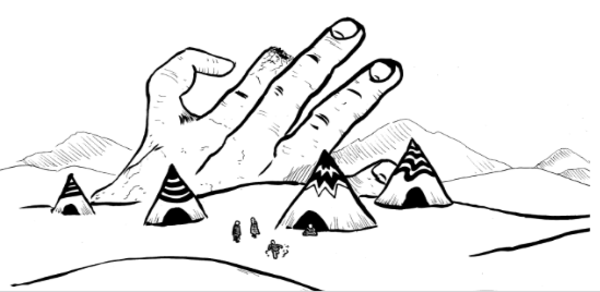
I’m going to admit that we haven’t played a game of Vaults of Vaarn, but that’s okay. The great thing about many OSR zines is that they’re mostly system neutral; many OSR players prefer to use actual classic editions of Dungeons & Dragons for their game, so many systems are designed with maximum compatibility for the traditional six stats.
Vaults of Vaarn is pre-packaged with a hack of the Knave system, a lightweight OSR engine with a few interesting quirks. First off, it’s important to note what the OSR playstyle is like. When most people think of roleplaying, they think of epic quests with their fleshed-out, detailed character following a mostly pre-written adventure path. This is a relatively new idea of what tabletop roleplaying implies. The first editions of Dungeons and Dragons were based off of miniature wargaming rules, and had similar expectations of brutality. You were not some valiant hero on a journey to save the world, you were a schmuck with a dagger and a torch delving into a dank dungeon crawling with monsters who can’t wait to rip your skin off. The games were heavily focused on dungeon crawling, monster fighting, and inventory management. “Theater of the mind” wasn’t really an option - even if you didn’t own miniatures, it was still easier to keep track of everything on a piece of gridded paper you’d huddle around.
Knave is very simple, while attempting to maintain the attrition-based gameplay of the OSR. Character creation is mostly at random, as is vogue in OSR games. First off, stats are rolled using 3d6, but unlike D&D where you add up these dice, with Knave you take the lowest rolled die as an ability bonus, then add ten to find your stat’s “defence”. If we were to roll a 3, a 4, and a 6 for our Strength stat, we would have a bonus of +3 and a defence of 13. This makes stats a lot less swingy than regular 3d6 stat rolling, or even 4d6 drop lowest. Your hit points always start as a 1d8+Constitution bonus; very unlikely, but not impossible, that you can start out with a single hit point! From there, you roll randomly to discover your starting equipment and special abilities; the only real decision you can make during character generation is picking which race your character is, and even then there’s plenty of tables to randomly generate what kind of desert weirdo you’re going to be.
The really interesting part of Knave is its inventory management system. You have a number of inventory “slots” equal to your Constitution defence. Most items will take up a single slot, but larger or more awkward items may take up more. The interesting part is the interplay between your inventory and your hit points. When your character runs out of HP - and they only start with 1d8, so it’s very likely - they start marking “Wounds” which take up inventory slots. Fill up 10 inventory slots with Wounds, and you’re dead. This is a brilliant interplay of mechanics that suits the OSR feeling. In a dungeon crawl, resource management is paramount. Most modern RPGs have forgone the meticulous tracking of torches and potions from the olden days.
In lieu of magic, Vaults of Vaarn has “Mystic Gifts”, psionic/technological abilities that cost HP to use. I like this as a good balance between being able to use magic whenever you want versus having a set number of “spell slots”. The Mystic Gifts are each associated with a “source of power” - nobody can innately paralyze with a single touch, it’s only through the boon provided by their parasitic spirit entity this is possible.
As well as the Mystic Gifts, players can have “Exotica” (the magical items proxy), or have cybernetic implants. The implants give the character a passive equivalent to a Mystic Gift, but a player can only have one implant associated with a stat at a time. If you have an Intelligence-based implant, you can’t add a second Intelligence implant until you get the first one out.
Vaults of Vaarn uses a milestone leveling system. When your crew completes an “Expedition” - a term which is left up to the GM to define - everybody gains a single XP. When your XP equals your current level, you level up and reset your XP to zero. You get three points to put into your stats, and roll a d8 and add the new number to your HP total. You can’t advance past level 10; you only gain a single hit point every time you would otherwise level up. The book encourages creating an “Apprentice” character to take over so your PC can retire in peace.
The blog
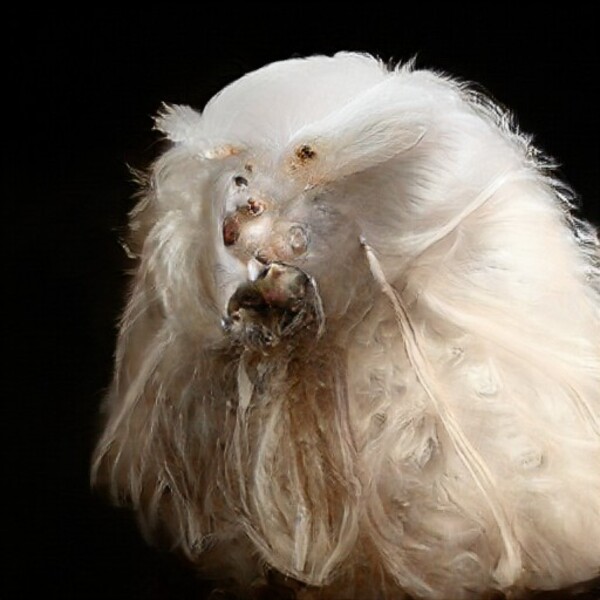
The Vaults of Vaarn zine is a tight little package. In only 50 pages, it provides a staggering amount of worldbuilding framework with a multitude of tables that can be reverse-engineered for many other RPG purposes. But with all the stuff packed into this zine, it still feels a little hollow. What, exactly, is a Faa nomad? What’s a cacklemaw? Where did the two-dimensional planeyfolk come from?
The Vaults of Vaarn blog is where the real meat is. The zine I’m reviewing now is the first of a planned series, and the blog is where you can find the actual substance of the setting. Here you’ll find information on a variety of monsters, details on player races, Vaarnish religious and linguistic customs, and more. It’s practically a whole ‘nother zine in itself!
But the real star of the show is its series of Actual Play articles, featuring the exploits of Crunk, Flim-Flam, and Findus. I love these guys. Crunk is a true-kin warrior with a penchant for the ladies. He’s described as a “lover and a fighter” - he’s terrifyingly efficient in battle, but has a gentle side that leads to some hilarious moments. Flim-Flam is a two-headed cacogen chef with a pair of pistols and a cybernetic hawk named Midnight. Flim-Flam is the “brains” of the operation (heh), who seems to come up with a lot of the party’s tactical thinking, but he’s got an addictive personality and finds himself in all kinds of sticky situations. Findus (if Findus’s player ever reads this review, please know that Findus’s name is hilarious) is a horse newbeast with laser-eyes and a parasitic spirit entity. He’s kind of the comic relief of the group - I notice that whenever somebody ends up getting hurt, it’s normally Findus. But don’t confuse him for a buffoon, the dude is ruthless, willing to shoot kids in the legs and get seriously fucked up on powerful hallucinogens. You can see an illustration of these guys on page 8 of the zine, I love Findus looking exactly like Bojack Horseman and Flim-Flam’s left head in a cage.
One of my favorite things about this blog is its illustrations. The zine uses ink pen drawings for its illustrations in the classic RPG style, heavily inspired by Moebius, to great effect. The blog uses a wide variety of illustrations taken from many sources - many of them original Moebius art - but my favorite is the usage of generative adversarial network images as art. These add a certain tone to the world of Vaarn that I’ve never experienced anywhere else. It’s one thing to, say, see an illustration of a large hairy beast of mysterious mystics cloaked in robes and masks, but when you can’t really make out any recognizable details besides the roughest shapes, it’s an eerie and unnerving sensation.
Thinal Thoughts
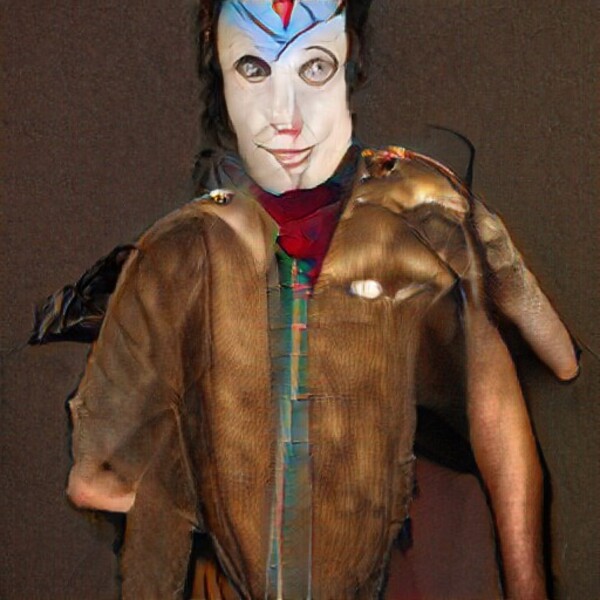
I really, really love Vaults of Vaarn. It may be a self-admitted pastiche, but pastiches are a cherished part of tabletop roleplaying to me. Where would we be if Gary Gygax had never picked up a copy of The Dying Earth? I’ve always had a soft spot for sci fi-fantasy, and Vaarn scratches that itch in a way I haven’t seen many other RPGs do.
And this is the kind of thing I like about the OSR. The best part of Vaults of Vaarn isn’t the setting itself, or the rules, or even the stories its system tells - it’s the toys it offers you to play with at your own table. Being as system neutral as possible, you could easily lift huge chunks of Vaarn into your own setting with minimal fuss. The dozens of randomized tables make quick work out of adding magical items, powers, gods, drugs, and monsters to your campaign. All of that would make a supplement worth the money without any glue holding it together, but the addition of a dense setting to bind it is icing on the cake. And all of this is free. Many OSR writers do this merely as a hobby, cranking out hundreds of pages worth of absolutely free content on their blogs just for the love of roleplaying.
If you like tabletop roleplaying, even if you’ve never stepped out of the Dungeons & Dragons safety net, download Vaults of Vaarn. Give the guy a tip for it. Immerse yourself into the blue sands and red sky, strap your plasma musket a little tighter to your back. The sun is setting, and this is leopard worm territory.
Vaults of Vaarn can be acquired on itch.io, DriveThruRPG, or purchased in print on Lulu.
Categories: gaming
Tagged: rpg tabletop gaming vaults of vaarn